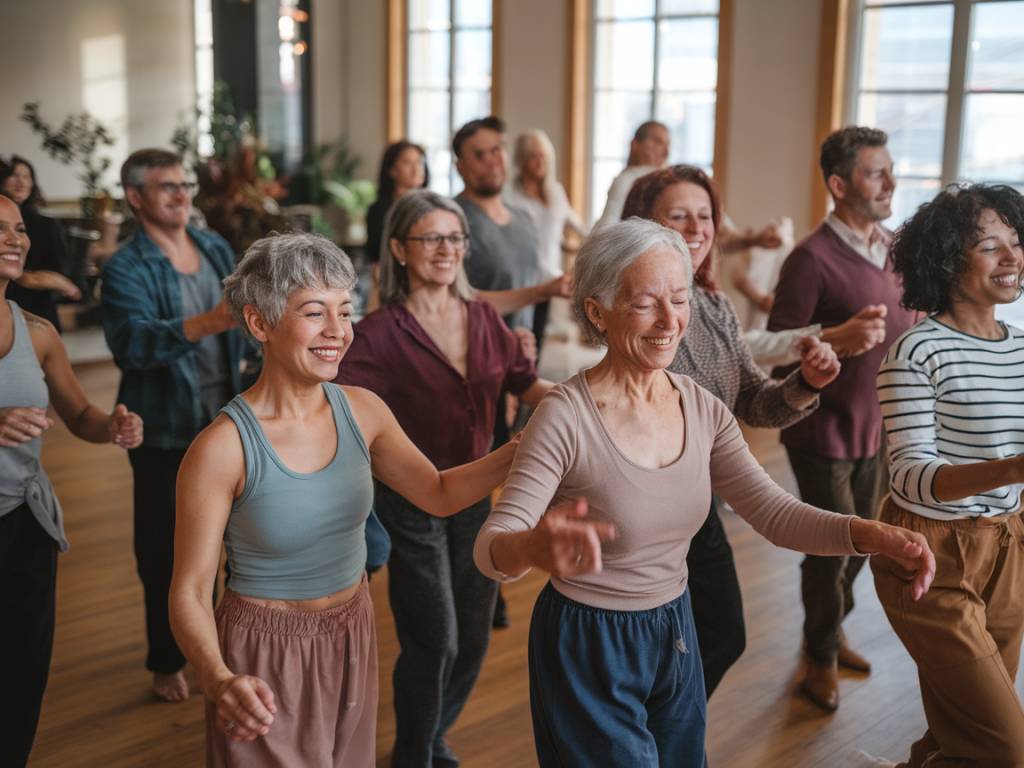Dance is not just a physical activity but also a potent tool for enhancing mental well-being. As more people seek holistic approaches to improve their mental health, dance has emerged as an accessible and enjoyable option. This article delves into the multiple benefits of dance for mental well-being, shedding light on why incorporating dance into one’s routine can be a transformative experience.
Stress Reduction
In today’s fast-paced world, stress is a common challenge faced by millions. Dance offers an effective way to combat stress. When dancing, the body releases endorphins, commonly known as the « feel-good » hormones. These hormones play a crucial role in reducing stress levels and promoting a sense of happiness.
Moreover, the rhythmic movements involved in dance can mimic meditation, providing an outlet for expressing emotions and fostering a state of relaxation. The focus required in learning dance steps or moves also demands concentration, helping individuals to escape their worries and focus on the present moment.
Anxiety and Depression Alleviation
Dance has shown significant promise in alleviating symptoms of anxiety and depression. Engaging in regular dance sessions can lead to improved mood and reduced feelings of anxiety. This is partly due to the social aspect of dance, which involves interaction with others, thus reducing feelings of isolation and loneliness.
Additionally, dance encourages the release of neurotransmitters like dopamine and serotonin, which are vital in regulating mood and combating depression. The creative expression inherent in dance allows individuals to channel their emotions positively, resulting in better mental health.
Enhanced Cognitive Function
Dancing is not just beneficial for physical health but also for cognitive functions. Learning dance routines requires memory and concentration, which can help improve cognitive skills. Studies have shown that dance can delay the onset of dementia and improve memory, making it a suitable activity for people of all ages.
Furthermore, dance challenges the brain to coordinate movements, remember sequences, and adapt to music, all of which stimulate neural pathways and improve brain function.
Boosting Self-Esteem and Confidence
Taking part in dance activities can significantly enhance self-esteem and confidence. Mastering new dance moves and routines provides a sense of accomplishment, which can be particularly empowering. This boost in self-esteem can translate to other areas of life, encouraging individuals to take on challenges with increased confidence.
Additionally, performing in front of others, whether in a class or on stage, helps individuals to overcome stage fright and develop a more positive self-image.
Social Connection and Community Building
One of the most rewarding aspects of dance is the opportunity to connect with others. Dance classes, social events, and performances offer a platform for people to meet, interact, and form meaningful relationships. This sense of community and shared goal can be incredibly fulfilling, providing emotional support and boosting mental health.
For those who may struggle with social interactions, dance can serve as a bridge, making it easier to connect with others through a shared interest.
Expression and Creativity
Dance is a form of self-expression that allows individuals to communicate their emotions and thoughts through movement. This creative outlet can be therapeutic, providing a means to express feelings that may be difficult to articulate verbally.
Engaging in creative activities like dance stimulates the brain and encourages innovative thinking, which can have positive effects on overall mental well-being.
Physical Health Benefits Linked to Mental Well-being
While the mental benefits of dance are significant, it’s essential to acknowledge the interconnectedness of physical health and mental well-being. Regular physical activity, such as dancing, improves cardiovascular health, strengthens muscles, and enhances overall physical fitness. These physical benefits contribute to better mental health by reducing the risk of chronic diseases that can cause stress and anxiety. Additionally, the physical exertion experienced during dance helps to release built-up tension, promoting a sense of physical and mental relaxation.
Improved Sleep Patterns
Engaging in dance can also lead to better sleep patterns. Physical activity helps to regulate the body’s circadian rhythm, promoting more restful sleep. Quality sleep is crucial for mental health, as it allows the brain to recuperate and process emotions and experiences from the day. Improved sleep can result in better mood, enhanced focus, and reduced stress levels.
Accessible and Inclusive
One of the most appealing aspects of dance is its accessibility. Dance can be practiced by people of all ages, abilities, and fitness levels. There are various styles of dance, ranging from ballet to hip-hop to ballroom, ensuring that there is something for everyone. This inclusivity makes dance a sustainable form of exercise and mental well-being practice that can be adapted to fit individual preferences and limitations.
Classes and tutorials are widely available, both in-person and online, making it easy for individuals to incorporate dance into their lives, regardless of their circumstances.
In summary, the benefits of dance for mental well-being are vast and well-documented. From reducing stress and alleviating anxiety to enhancing cognitive function and boosting self-esteem, dance offers a holistic approach to improving mental health. The physical health benefits, combined with the sense of community and self-expression inherent in dance, make it a powerful tool for fostering mental well-being. Whether you are a seasoned dancer or a novice, finding a style that suits you can be a transformative step towards better mental health.

